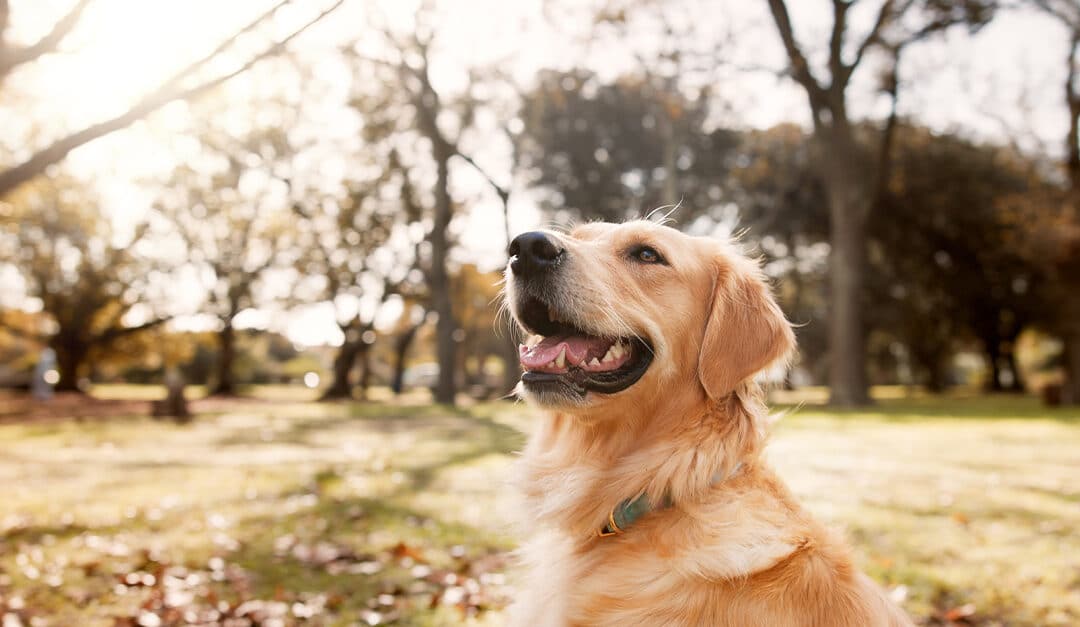Do you have a dog? Awww, that’s amazing! They’re great life companions, so we bet you’re going to live amazing moments with your dog.
You can run with them, play together, even relax and watch some Netflix together! And just like they’re great for all those activities, they’re also great for practicing your Spanish skills.
Yes, you read that correctly! You can teach them some dog commands in Spanish. We bet it’ll be a fun moment and a great memory to have with your dog. You’ll always remember the time you learned some Spanish vocabulary while training your dog!
It’s also a great first step if you want to start learning Spanish but are nervous. Sharing those first Spanish steps with your dog can help you calm down and realize learning can be fun.
So come learn 15 dog commands in Spanish to teach your dog.
15 Spanish Dog Commands
Sentado or Siéntate
Let’s start with a popular one: “Sentado” or “Siéntate”!
“Sentado” is “sitting”. It’s usually used for when someone is already sitting down, like “Max está sentado” (Max is sitting down). But it’s also common to use it to tell our dogs to sit down.
Something you must know is that “sentado” is for males and “sentada” is for females.
You can also use “siéntate”. This means “sit down”, so it’s more like a command.
Mírame
This word means “look at me”, and it works to tell your dog to do exactly that, to look at you.
Maybe you want to give him/her something, but he’s/she’s distracted. Or you want to show him/her something.
It’s a very important command.
¡No!
This is a very important one. The word it’s written the same as in English, so you might already know what it means. It’s simply a “no”.
Used to tell our dogs to stop doing something or not even start doing it. For example: If your dog is about to eat the chicken on the counter, tell him “no”.
¡Suelta!
If your dog has grabbed something they shouldn’t, use this command, so they let go of it. “¡Suelta!” is like saying “let go!” or “leave it!”.
¡Buen perro!
Just like sometimes we have to scold our dogs and tell them “no”, we also must let them know when they’re being good.
That’s exactly what “buen perro” is for, as it means “good dog”.
Other common ways to let them know this is by telling them: “Buen chico” for males, or “buena chica” for females. It means “good boy” and “good girl”.
¡Muy bien!
This is a phrase that will let them know that they’re doing a good job.
“Muy bien” means “very good”. So use it when they obey or are doing something right. You should look and sound happy when saying it.
Quieto
Sometimes dogs can have a lot of energy and move a lot, right?
Well, this word means “still”, so use it for those moments when you want them to stay still.
“Quieto” is for males; “quieta” is for females.
Ven aquí
This means “come here”, and it’s used to tell your dogs to come to where you are.
You can also simply say “ven” (come).
La patita
This means “the little paw”, because “patita” it’s the diminutive of “pata” (paw).
It’s used to ask your dog to give you the paw.
For this, people tend to hold out one hand completely open. This way your dog can place their paw on top of your hand.
You could also say “dame la patita” (give me the little paw). Or simply say “la pata” (the paw).
Abajo
This means “down”, and it’s used to tell your dog to get down. It’s not a position like sitting down, but not like sleeping either. Simply getting down or lying down.
In this same line, some people also use the word “tumbado”, which means “lying down” and works as the command “down”.
People also use “abajo” to tell their dogs to get down from somewhere. For example: If your dog is on top of the table, tell him/her “abajo”, so he/she gets down.
Acuéstate or Acostado
“Acuéstate means “lie down”, and it’s more like an order.
“Acostado” means “lying down”, so it’s used for when someone is already lying down. For example: “Beethoven está acostado, porque está cansado” (Beethoven is lying down because he’s tired). But “acostado” is also used as a command to tell our dogs to lie down.
“Acostado” is for males and “acostada” is for females.
Gira
This is a cute and fun command. It means “spin” or “turn”. So your dog can spin on their place.
Junto
This word is like saying “next to”. If you use it as a dog command, you’re telling your dogs to go be right next to you.
It works like the English dog command “heel”.
¡Tráelo!
“Tráelo!” Means “bring it”. So it’s like the English command “fetch it” that works to tell our dog to bring something back. Like when you throw a ball and ask him/her to go for it and bring it back to you. That’s exactly what this Spanish dog command works for.
“Tráelo” is for masculine and “tráela” is for feminine. For example: “La pelota” (the ball) is feminine, so “tráela”. “El disco volador” (frisbee) is masculine, so “tráelo”.
You could also say “trae” (bring).
Rueda
This works for a very cute and fun trick. “Rueda” means “roll” or “roll over”, like the English dog command. So if you want your dog to roll on the grass, tell him/her this word.
¡Suelta el Miedo! Enjoy Learning Spanish with TruFluency
Did you have fun practicing with your dog? Great! If you’re ready to continue your Spanish learning journey, we’re ready to help you! And you’ll also have tons of fun with us!
Here at TruFluency we offer online Spanish classes with native teachers. Lessons are completely customized to you. We’ll discuss your language goals and needs and make a plan to achieve them!
So if you want to learn more vocabulary about dogs in Spanish, we can help. Or if you want to learn business jargon in Spanish, we’re the perfect option. Or if you need to work on your Spanish pronunciation, we’ll do it.
The best of all is that we base our lessons on the Bellieu Method. It consists of encouraging students to speak in Spanish in every class. It’s the best way you’ll achieve Spanish fluency!
Take 2 trial classes of one hour each now!
¡No te quedes sentado y ven a nuestras clases, no te arrepentirás!





